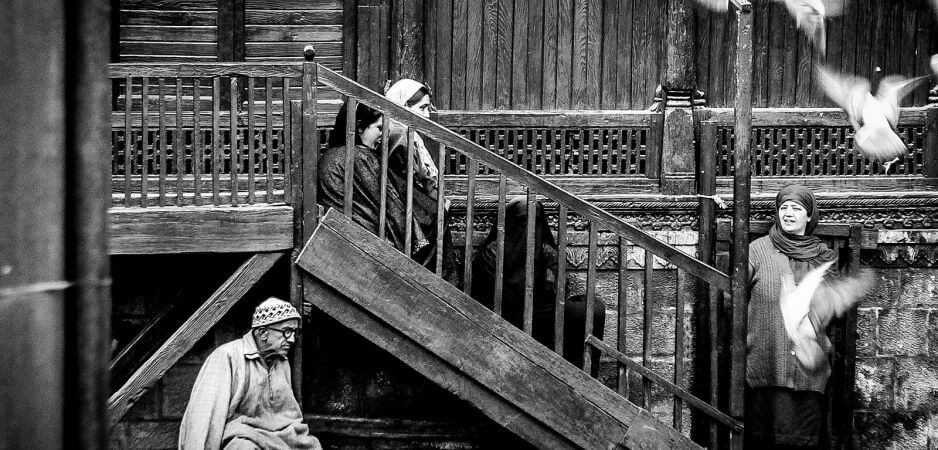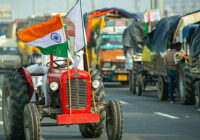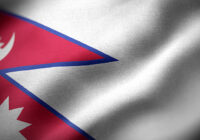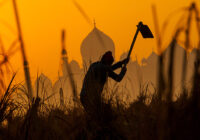English-speaking elites in Lutyens’ Delhi tragically aid and abet Pakistan’s longstanding designs to pry Kashmir away from India.
On May 21, Fair Observer published an article by this author titled “Arundhati Roy, Please Do Not Support Pakistan’s Jihad in Kashmir.” It was republished by NewsLaundry. On May 24, The Wire* ran an article titled “How Fake News Triggered Republic TV, TV18 Attacks on Arundhati Roy.” The article quoted Roy who denied saying, “even 70 lakh [7 million] Indian [soldiers] cannot defeat Kashmiris.”
The Wire cited this writer’s May 21 article that was subsequently taken down by Fair Observer and NewsLaundry. The former published a retraction and an apology to Roy and its readers because “the reported facts in the above-quoted article might not have come from a credible source.” The ARY News story, which was embedded in that article, has subsequently altered its headline from “India can’t defeat Kashmiris even with 70 lac soldiers: Arundhati Roy” to “‘Unverified statement’ of Arundhati Roy on Indian soldiers in Kashmir sparks controversy.”
This writer had used Pakistan-based The News as one of his sources. This source is regarded as credible. On September 29, 2016, The Wire itself quoted The News in its story on India’s operations in Pakistani-held Kashmir, “In the Pakistani Media, Denial of Surgical Strikes is the Big Story.” Many Indian writers have used Pakistani sources regularly, and this author is no exception.
This author erred in depending on Pakistani news organizations. They continue to carry the news regarding Roy with minor modifications. They have neither taken the articles regarding Roy offline, nor apologized about misreporting the facts. It appears that even the more reputed names in Pakistani media are no longer credible.
SELF-HATING COCONUTS IN LUTYENS’ DELHI
While Pakistan and its media might be playing games, we must delve deeper as to why they used Roy as a stalking horse. Why did so many Indians believe claims in mainstream Pakistani media that Roy had made a statement damning the ineffectiveness of Goliath-like Indian army in the face of David-like Kashmiris?
For some years now, Lutyens’ Delhi has turned against the concept of the Indian state. Roy is the glamorous face of this clique. In 2000, India’s Supreme Court decided in favor of a controversial dam that Roy vociferously opposed. Instead of accepting the ruling, Roy dismissed it. She said that she did not want to say the movement against the dam “should be violent or non-violent.”
The Booker prize-winning Roy was speaking to the UK-based The Independent. She went on to say: “I don’t respect the court as an institution: I know it is as much a part of the system as anything else. It offers shelter to the privileged. The other India stands outside the pale.” There is an element of truth to Roy’s comments, but she is Manichean in her view of India. She fails to realize that, for all its faults, India is a unique democratic experiment where women, untouchables and Muslims have held the highest offices of the land.
Roy has earned her celebrity status lambasting India in Western capitals. She has not even spared Mahatma Gandhi, the father of the nation. In The Laura Flanders Show, she damned Gandhi as a racist and a casteist. As Samuel Ollunga and Atul Singh pointed out in Africa This Month on Fair Observer, India’s iconic leader was imperfect. Gandhi’s own grandson has called him “ignorant and prejudiced about South Africa’s blacks,” but also points out that “the imperfect Gandhi was more radical and progressive than most contemporary compatriots.”
Again, Roy lacks nuance in understanding Gandhi. She is judging him ideologically by the standards of her times and is belittling the great man in Western capitals, where many left-leaning liberals believe they brought liberty, progress and democracy to ignorant, superstitious, caste-bound India. None other than John Stuart Mill believed that Indians were not “human beings in the maturity of their faculties.” Many Western liberals and the English-speaking elites of Lutyens’ Delhi still believe Mill’s view subconsciously if not consciously.
The article in The Wire that points out Roy did not speak to Pakistani media and chronicled how it was fake news quoted her article dated July 25, 2016, in Outlook. In that article, Roy condemned “the violation of human rights by Indian security forces in the Kashmir valley.” She went on to argue: “Egregious though they are, those violations are the consequence — the inevitable and unavoidable consequence — of the militaristic suppression of a people’s struggle for freedom. As per Roy, Kashmiris are not fighting for “the establishment of the rule of law or an end to human rights violations.” She asserts, “They are fighting for azadi [freedom].”
For someone who has not lived in Kashmir, does not speak the local language and claims not to visit the valley too often, Roy is making a rather bold declaration. In fact, she has a habit of discussing issues she knows little about. On March 27, 2010, Roy penned a gushingly romantic three-part piece in The Guardian titled “Gandhi, but with guns” about Maoist Naxalites fighting Indian security forces.
Roy was clearly besotted with the rebels fighting the injustices of the Indian state. She found them “more Gandhian than any Gandhian” in their consumption, and claimed they had “a lighter carbon footprint than any climate change evangelist.” She went on to say that the Naxalite army “even has a Gandhian approach to sabotage; before a police vehicle is burnt for example, it is stripped down and every part is cannibalized.” She pondered penning a play titled, “Gandhi Get Your Gun.”
It is indubitably true that India has its problems. This author hails from Varanasi, the oldest living city on the planet that Mark Twain once described as “older than history, older than tradition, older even than legend and looks twice as old as all of them put together.” To say the city has its problems would be an understatement. Yet Varanasi also has a heritage that is rich and glorious. Similarly, India has its multiple warts, but it is not a nation state that is as repressive as Russia, as paranoiac as Pakistan and as imperial as the United States. For all her comments, Roy remains the darling of Lutyens’ Delhi and continues to inveigh against the vile Indian state from her rather posh accommodation.
Atul Singh, the founder, CEO and editor-in-chief of Fair Observer, has frequently criticized Lutyens’ Delhi as being full of “coconuts.” By coconuts, Singh means Indians who are brown outside but white inside. They are Lord Thomas Macaulay’s illegitimate children who are ashamed to speak the local language, who look for approbation from London or New York, and who denigrate India as a dark, divided and decadent land. Speakers of vernacular languages from the banks of the Ganges or the Kaveri are deemed uncouth, uncultured and uncivilized by the purveyors of modernity in the plush environs of India’s national capital.
 Roy and Lutyens’ media represent the triumph of Lord Macaulay. On February 2, 1835, this impressive English imperialist wrote a famous minute on Indian education. He argued that it was impossible for the British East India Company “to attempt to educate the body of the people.” Instead, the British “must at present do our best to form a class who may be interpreters between us and the millions whom we govern, — a class of persons Indian in blood and colour, but English in tastes, in opinions, in morals and in intellect.”
Roy and Lutyens’ media represent the triumph of Lord Macaulay. On February 2, 1835, this impressive English imperialist wrote a famous minute on Indian education. He argued that it was impossible for the British East India Company “to attempt to educate the body of the people.” Instead, the British “must at present do our best to form a class who may be interpreters between us and the millions whom we govern, — a class of persons Indian in blood and colour, but English in tastes, in opinions, in morals and in intellect.”
India’s Delhi-based English elites are a member of this self-hating class and are Macaulay’s illegitimate children. They find fault in India, its courts, its laws, its politics, its values and its very identity. For some of them like Roy, Naxalites and Kashmiris are doughty warriors fighting evil Indian security forces in a battle of good against evil.
THE TRUTH IS RARELY CLEAR AND NEVER SIMPLE, ESPECIALLY IN KASHMIR
Roy claims that Kashmir is “the most densely militarised zone in the world.” Now, it is certainly true that there is a massive presence of security forces in Kashmir. It is also true that Kashmir is not the West Bank. It is not pock-marked with settlements of trigger-happy Hindus and Sikhs who have taken land away from the native population.
To understand Kashmir, Roy needs to study the past. Pakistan has played a key role in militarizing the region. Its machinations on Kashmir began in 1947 itself. For Pakistan, Kashmir was a coveted possession because of its Muslim majority. This state was a touchstone for the Muslim League’s claim to represent all Muslims in India. Success in weaning over Kashmir to its side would have legitimized Pakistan’s claims to represent all Indian Muslims.
While the much-maligned Gandhi was arguing for a secular nation that would be home to all religions, castes and races, the Muslim League was purveying the two-nation theory. As per this toxic idea, Hindus and Muslims were two separate nations. The British masters of India encouraged this theory in furtherance of their famous policy of “divide and rule” that enabled them to play off sections of local populations all over the world.
The fundamentalism of the Muslim League led to the tragic partition of British India and the creation of Pakistan, which included modern-day Bangladesh, in 1947. The partition caused what William Dalrymple has called “one of the greatest migrations in human history” when communities that had coexisted for centuries broke down into sectarian violence and millions crossed the border to save their lives. Bengal and Punjab experienced the worst of the violence. In Dalrymple’s words, “the carnage was especially intense, with massacres, arson, forced conversions, mass abductions, and savage sexual violence.”
For the Muslim League and the young Pakistan, possession of Kashmir was important not only because of its geostrategic importance, but also to lay claim to the loyalty of all Muslims in the Indian subcontinent. In her paean to azadi, Roy forgets that Kashmir did not accede to India because Sikh, Gurkha or Maratha troops marched in. Kashmir turned to India when Pakistan sent irregular troops, in the form Pashtun tribesmen, to conquer the state.
The accession of Kashmir in 1947 was supported both by Maharaja Hari Singh, the state’s ruler, and the National Conference, Kashmir’s largest party led by Sheikh Abdullah. Under the Indian constitution, Kashmir’s accession became irrevocable and non-negotiable after ratification by the Jammu and Kashmir Constituent Assembly in 1956. Pakistan and Lutyens’ media often hark to the plebiscite prescribed by the United Nations Security Council Resolution 1948. They forget that it called for a “cessation of all fighting.”
The resolution also stated that the accession of Jammu and Kashmir to India or Pakistan had to be “decided through the democratic method of a free and impartial plebiscite.” Since then, Pakistan has unleashed violence in Kashmir, making a peaceful, free and impartial plebiscite impossible. More importantly, India’s violent neighbor has altered the demography of Pakistan-Occupied Kashmir (PoK) by settling radicals from other states into the valley.
In fact, PoK used to be a Shia-majority area. In the words of KPS Gill, one of India’s greatest officers, “The Pakistani establishment has long supported an anti-Shia programme in this region.” None other than Pervez Musharraf who went on to become the military dictator of Pakistan was in-charge of the brutal suppression of a local rebellion in May 1988. Gill says: “Truckloads of Sunni tribals were sent in from the Afghan border” and they conducted a “brutal pogrom against the locals.” Thereafter, Pakistan brought in large numbers of Sunnis from Punjab and North West Frontier Province, “radically altering the demographic profile” of PoK.
On the Indian side, Sunni radicals have altered demography too. In 1990, Pakistani proxies conducted the ethnic cleansing of Kashmiri Pandits, the original inhabitants of the state. As Varad Sharma chronicled in The Diplomat, massacres followed in 1997, 1998 and 2003, and “the horror of persecution” always loomed over those who stayed behind. Lutyens’ Delhi has been deafeningly silent on what happened to Kashmiri Pandits.
The facts on the ground make the UN Security Council resolution redundant. Besides, Roy and her ilk conveniently forget that no nation state can allow for the “redrawing” of maps on the basis of the threat of violence. India cannot hand over Kashmir to Pakistan or give it azadi in an effort to buy peace. Kashmir is also a part of Jammu and Kashmir, which includes Hindu-majority Jammu and Buddhist-majority Ladakh. For all the unrest, Kashmiris vote for their representatives, go to court to redress their wrongs, and have freedom of speech that they would not enjoy in PoK, Tibet, Chechnya, Syria or Saudi Arabia.
KASHMIR AND JIHAD
In Roy’s article, Outlook published the dead body of Burhan Wani, whom it called a “fallen local hero.” Wani was less of a hero and more of a hothead who was leading Kashmir down the vortex of violence. Zakir Musa, Wani’s successor as the leader of the Hizb-ul Mujahideen, has exposed the farce of azadi for what it truly is. Musa’s threat to the Hurriyat leadership categorically referred to, “Our Kashmir’s war, particularly of the Mujahideen, is only to enforce Shariah. It is an Islamic struggle.” Earlier as well when certain politicians were subtly justifying the stone-throwing mob running amok in Kashmir as “people with grievances,” Musa had been unambiguous: “Whenever we are fighting with [a] gun or throwing rocks, this should not be for nationalism but for Islam.”
They conveniently forget that public order and a diminution in violence are essential for political discussions to commence. It is in Pakistan’s interest to ensure that does not happen.
Let us for a moment not delude ourselves. Howsoever hard intellectuals like Roy would wish to sugar coat the violence in Kashmir, the bitter bill underneath has been revealed by Musa. Not that there had been any doubt about the nature of violence in Kashmir since the 1980s.
The maktabs (religious schools), set up by successive governments in the state since 1947, were the nucleus that had initiated the process of indoctrination of Kashmiri youth. It was, however, General Muhammad Zia-ul-Haq who triggered the jihad in Kashmir under the policy of “bleeding India through a thousand cuts.” As Raheel Sharif, the former Pakistani army chief, says, Kashmir has remained an “unfinished agenda of partition” for Islamabad.
In the last few years, the dimensions of the conflict in Kashmir have changed dramatically with the concept of jihad replacing the nebulous demand for azadi. As categorically asserted by Musa, the violence in Kashmir is now about the mythical notion of the Muslim umma (community) and Ghazwa-e-Hind (conquering of India). The Islamic State flags openly visible in the ongoing protests are a manifestation of this syndrome. It is foolhardy to delude the people with homilies of oppression and resentment against misgovernance as the reason for the endless violence in Kashmir.
If misgovernance and corruption, as proxies for the terror groups want everyone to believe, were the primary reasons for the anger against India, then this raises two questions.
First, why were Kashmiri Pandits forced to migrate from ancestral land under threat of their lives? With mosque loudspeakers blaring threats to the Pandits from loudspeakers and newspapers like Daily Alsafa printing advertisements advising them to leave the Kashmir Valley within two days and a subverted state system refusing to help them, their chances of survival were minimal.
Second, was the genocide and ethnic cleansing of Pandits not carried out with a view to alter the demography favorably for Pakistan proxies, who would then find it easier to demand separation from India? The brutal assassination of Neelkanth Ganjoo, the judge who sentenced Maqbool Bhat to death, and Lassa Kaul, director general of Doordarshan, was a message to the Pandits to either leave the valley or face the consequences.
Have the supporters of the notions of azadi, who wax eloquent about India’s perceived failure to hold onto Kashmir even through its army or celebrate the anti-India sentiments, ever wondered about the consequences of supporting such radicals who killed and raped innocents simply because of their religion? Has any effort been made by these people to analyze the reasons for genocide of Pandits when they never held power in the state since 1947? The pretext of misgovernance and corruption as causes of anger is just a veneer to cover up for macabre terrorism.
PAKISTAN’S LONG GAME
The loss of Bangladesh and the inglorious surrender of 93,000 soldiers before the Indian army in 1971 confirmed to Pakistan its inability to defeat India through a conventional war. With the option to seize Kashmir through force of arms blunted, Pakistan resorted to a hybrid war against India. It was General Zia who introduced the concept of jihad and “non-state actors” as an instrument of state policy. His now famous idea was to bleed India through a thousand cuts. Promoting insurgency not only in Kashmir, but also in Punjab became policy for Pakistan.
The Soviet invasion of Afghanistan in 1979 came at the correct time for General Zia as his plan in Kashmir was floundering in the absence of strong local support. As the Central Intelligence Agency stepped in with funds and weapons for the Afghan mujahedeen through Pakistan, Zia diverted both toward the valley. The signs of anti-India sentiments were visible in 1983 when the Indian cricket team, which had just won the World Cup in Britain, was heckled, abused and assaulted. As a precursor of what was to follow, Hindu temples were desecrated and the property of Kashmiri Pandits was looted in the Anantnag district in 1986.
Subsequently, any protest triggered over issues unrelated to control by India, such as the death of General Zia in Pakistan or the demonstrations over Salman Rushdie’s Satanic Verses, invariably resulted in the targeting of Kashmiri Pandits who lost lives and property during the course of such protests. The idea was to target the Pandits and compel them to leave the Kashmir Valley through continuous violence.
With the Soviet withdrawal from Afghanistan in 1989 and the US abandonment of the region, Pakistan was flush with money, weapons and, more importantly, the mujahedeen who were encouraged by their success against the Soviets. Pakistan had, by then, realized that religion was an elixir to bind disparate and violent individuals into a force. Furthermore, with the Soviet threat ceasing to exist, Pakistan was free to move its armed forces from the Afghan border to the Indian side. The Pakistani army provided cover to infiltrate terrorists into Kashmir.
The failure to decipher these ominous signs and come up with counter-narratives resulted in the ethnic cleansing and genocide of Kashmiri Pandits in 1990. The Pakistani army and its proxies thus succeeded in establishing a religiously homogenous region. Today, the instigated violence of this monolithic mob is justified as a response to perceived Indian brutalities.
The cries of jihad have continued unabated since. While the West is just waking up to the menace of assassinations and violence in the name of religion, Kashmir has been a witness to such nefarious actions for some time. Like a dynamic entity, jihad has assumed proportions even beyond the wildest imaginations of its mentor Pakistan. The fact that Lashkar-e-Taiba’s chief, Hafeez Saeed, who has long been an instrument in Pakistan’s hybrid war against India, is in detention due to being a threat to Pakistan epitomizes this manifestation. Pakistan, however, continues with its dubious distinction of “good” and “bad” terrorists.
Kashmir has now become a laboratory for testing radical Islamist ideas. We should be indebted to Zakir Musa for spilling the beans on the worst kept secret. Have any supporters of azadi ever wondered why the various terrorist groups waging war against India have coalesced under the umbrella of United Jihad Council in Pakistan?
As a wave of extremism sweeps through the Muslim world, the leaders of radicalism believe they are instruments for an idea whose time has come. Roy and Lutyens’ media are acting as Pakistan’s force multipliers. They conveniently forget that public order and a diminution in violence are essential for political discussions to commence. It is in Pakistan’s interest to ensure that does not happen. After all, it still follows the late General Zia’s canny policy of bleeding India through a thousand cuts, and the denizens of Lutyens’ Delhi gladden Zia’s ghost by supporting azadi in Kashmir.
*[Editor’s note: Extracts from the author’s earlier article, “Arundhati Roy, Please Do Not Support Pakistan’s Jihad in Kashmir,” have been included in this piece at Fair Observer. This article by The Wire was published on May 23, not May 24 as the dateline shows. It has been updated at least three times by editors, yet no disclosure has been provided for readers.]
The views expressed in this article are the author’s own and do not necessarily reflect Fair Observer’s editorial policy.
Photo Credit: Daiyaan.db
Support Fair Observer
We rely on your support for our independence, diversity and quality.
For more than 10 years, Fair Observer has been free, fair and independent. No billionaire owns us, no advertisers control us. We are a reader-supported nonprofit. Unlike many other publications, we keep our content free for readers regardless of where they live or whether they can afford to pay. We have no paywalls and no ads.
In the post-truth era of fake news, echo chambers and filter bubbles, we publish a plurality of perspectives from around the world. Anyone can publish with us, but everyone goes through a rigorous editorial process. So, you get fact-checked, well-reasoned content instead of noise.
We publish 2,500+ voices from 90+ countries. We also conduct education and training programs
on subjects ranging from digital media and journalism to writing and critical thinking. This
doesn’t come cheap. Servers, editors, trainers and web developers cost
money.
Please consider supporting us on a regular basis as a recurring donor or a
sustaining member.
Will you support FO’s journalism?
We rely on your support for our independence, diversity and quality.






